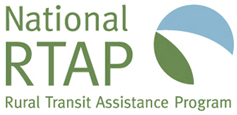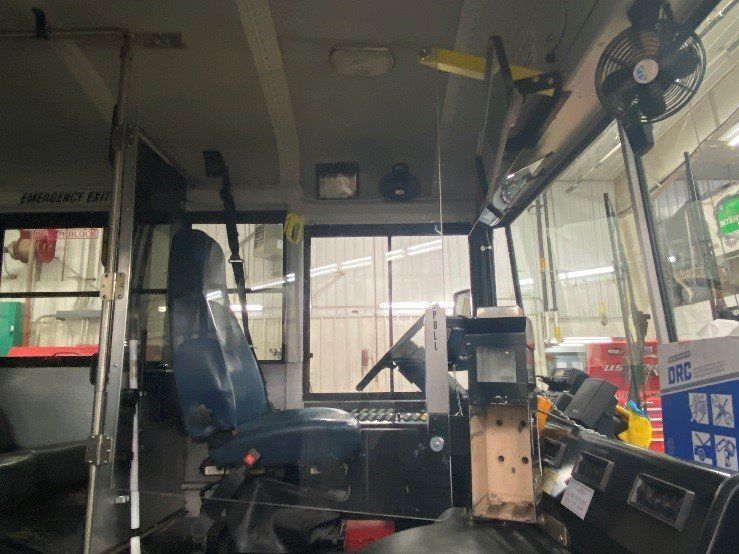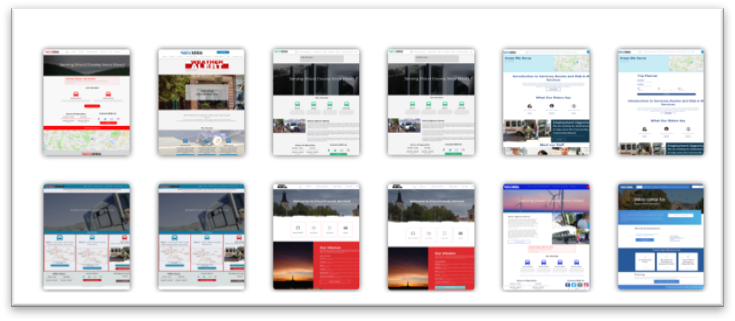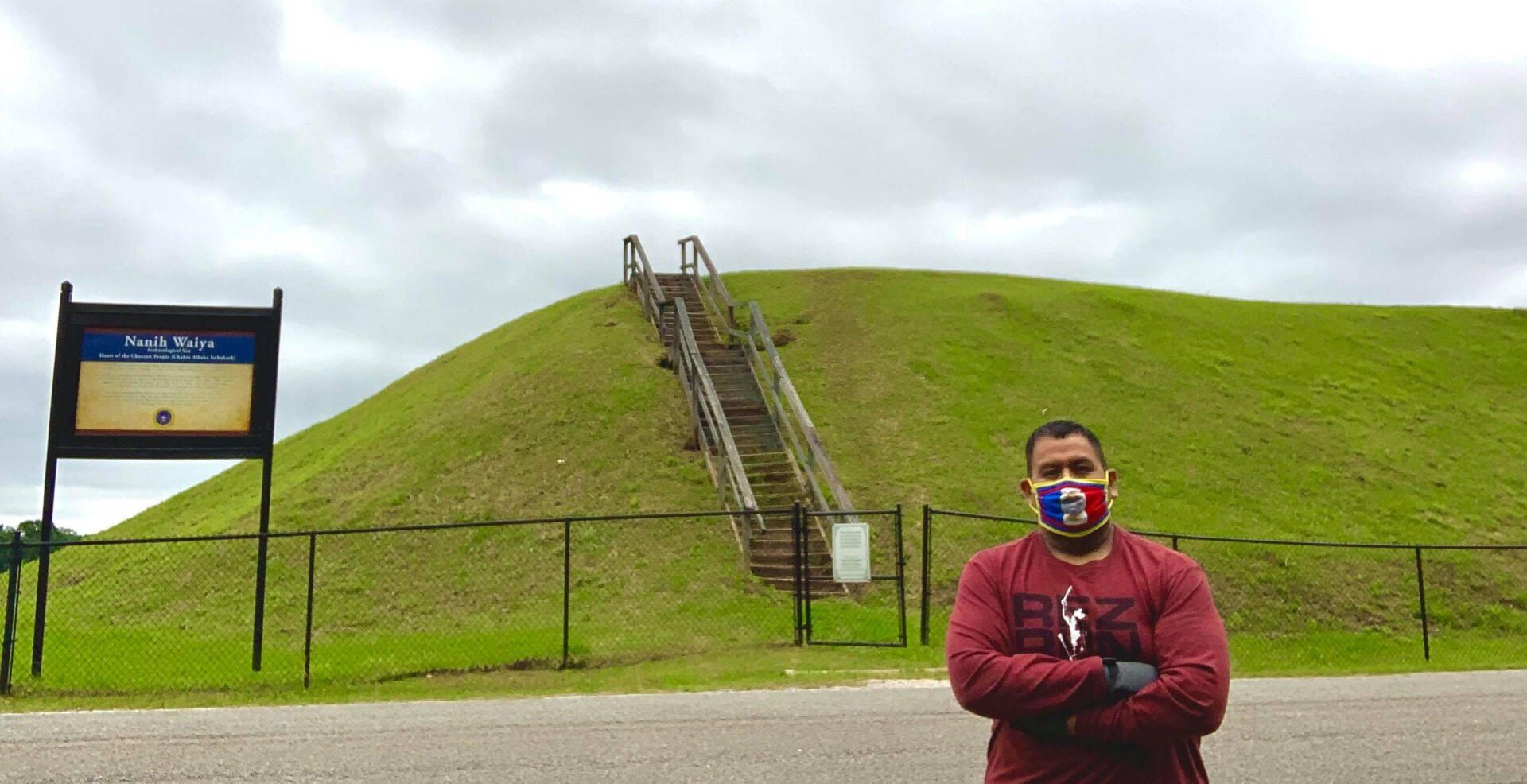Introduction
The Coronavirus Disease 2019 (COVID-19) pandemic has altered the very fabric of everyone’s lives throughout the world in a very brief time period. Rural and tribal transit agencies everywhere had to change their entire operations and implement rigorous new safety protocols to protect staff and passengers from the spread of a highly contagious disease that the scientific community still doesn’t have all the answers for. Not only that, many agencies face challenges including reduced ridership and income, staff possibly contracting the disease, transitioning to remote workforces, and applying for and administering new grant funds and loans to implement these necessary changes. May 2020 marked another phase in the pandemic, as new COVID-19 case numbers began to plateau or diminish, and states began their reopening phases for businesses that had been closed due to shelter-in-place orders. This Best Practices Spotlight Article provides best practices and guidance on safety, communications, funding, and more from the perspectives of state, rural and tribal transit managers, and clinical experts.
State RTAP/DOT Case Study: Office of Passenger Transportation, Michigan Department of Transportation (MDOT)
Marcele J. Edington, Michigan Department of Transportation (MDOT) Office of Passenger Transportation program manager manages the Section 5310 program that helps transit agencies implement the best planning, operation, and communications strategies.
Transit agency funding is a priority and Michigan is rolling out funding from the Coronavirus Aid, Relief, and Economic Security (CARES) Act for Fiscal Year (FY) 2020 and FY 2021 to assist both rural transit and intercity bus agencies. CARES Act funds also will be applied for lost revenue. A state legacy grant will be used to support Section 5310 subrecipients with projects related to COVID-19 and seniors and persons with disabilities.
The state has developed innovative methods to continue communication and public involvement throughout the crisis. A state executive order enabled public bodies to conduct meetings remotely to facilitate public participation. Meeting planners have noticed a rise in attendance since they implemented virtual meetings, which will be taken into consideration to plan future meetings and trainings. A new statewide web portal was developed to share information, provide updates and enable group chats. Michigan is working with the State Emergency Operations Center and hosting nightly calls with subrecipients to share ideas and concerns. Other effective communications include group e-mails on topics including how to stay safe, social distance at drug and alcohol collection sites, and compliance deadlines extensions.
Transit Agency Case Study: Heart of Iowa Regional Transit Agency (HIRTA)
Tribal Transit Agency Case Study: Mississippi Band of Choctaw Indians Community Regional Transit
The Mississippi Band of Choctaw Indians has a thriving Community Regional Transportation program – Choctaw Transit, with 32 buses that usually travel 75-100 routes a day within 9 counties. In addition to providing transportation to the Mississippi Band of Choctaw Indians, Choctaw Transit also provides rural transportation to the cities of Meridian and Jackson, serves local colleges, transports many dialysis patients, and has provided rides to roughly 77,000 people in 2019. Jeremy Bell became Interim Director for Community Regional Transportation around the time that the first COVID-19 cases were diagnosed in Mississippi, but the Tribe had already convened a COVID Team and started their planning efforts even before that. One of their first initiatives was a comprehensive educational campaign, with posters, flyers, and brochures about staying safe during the outbreak on every bus and every Tribal building. The Tribe’s office of public information was instrumental in making that happen.
“The Mississippi Band of Choctaw Indians approached the pandemic through communication, communication, communication!” declared Jeremy. That meant working directly with FTA liaisons for obtaining and applying CARES Act funding, communicating with county and tribal emergency management departments, and holding weekly meetings with department and program Directors throughout the Mississippi Band of Choctaw Indians Tribal Government and Enterprises. The transit agency was just as forward-thinking in their communications with passengers. Staff called passengers on the phone to let them know when routes were changing and other important information. In addition, the Tribe developed an Important Information on COVID-19 web page with Public Notices from their Tribal Chief, executive orders, and additional important information.
Their efforts in planning, communication, and partnerships helped in many ways. While the transit agency had planned well before the pandemic and had a stockpile of cleaning supplies and personal protective equipment (PPE), more were needed. They were able to obtain more from their Choctaw Emergency Management and the Choctaw Health Center. They obtained even more supplies from Pearl River Resort that was not able to operate during the shutdown.
Even with a partial tribal shutdown and a limited number of drivers concentrating on taking riders to dialysis and medical appointments, the agency still wanted to give back. They waived the fare for essential medical workers using their transportation services to get to the health center, local hospital or nursing home, to say, “thank you” and let them know that everyone is in this together. Programs that have been partially shut down started to make beautiful and meaningful masks to distribute to essential workers. The Department of Early Childhood Education and the Department of Chahta Immi, the Tribe’s cultural department, are two such programs. In this photo, Jeremy proudly wears his mask next to Nanih Waiya, an ancient earthwork mound whose name means "leaning hill" that was built at least 1000 (possibly over 2000) years ago.
Jeremy is thinking ahead to a later time when the Mississippi Band of Choctaw Indians will be reopening industry and lifting restrictions. His staff is researching wheelchair securement training based on a model he observed at an ADA training session at Mississippi State University, where wheelchair securement equipment could be installed in one dedicated room and one person at a time could be trained. The agency is also purchasing larger buses that will allow more social distancing. For now, Choctaw Transit is issuing bigger buses on routes that will allow social distancing between the passengers, for example, 7 passengers on a 27-29 passenger bus allows many open seats for social distancing. The number one item they are working on now is installing barriers to protect passengers and staff, including office staff. Jeremy has worked with local experts, such as environmental health services staff, public health services staff, and infectious disease doctors and nurses, to help find the most effective cleaning supplies and PPE. The transit agency was able to obtain advanced N-95 masks and a suit that covers a person from head to toe, even with fabric coverings for shoes. They also formed a partnership with the Environmental Health Services which allows them to disinfectant their buses and buildings with a high-grade disinfectant. “The biggest thing we face is the unknown,” said Jeremy. “If there is a second surge, you have to be prepared.”
Throughout the crisis, the Tribe as a whole has worked strongly together, which has helped everyone in the Mississippi Band of Choctaw Indians and the communities that Choctaw Transit serves. “People may not view these drivers as essential, but our drivers are,” declared Jeremy. “Even now, during this pandemic, they are going above and beyond. Coming in, driving their routes, cleaning buses, going home and then coming back again. We are proud to do this job.”
Advice and Best Practices from Clinical Experts
Dr. Brandon Sick, a graduate of University of Rochester and Albany Medical College, has been practicing family medicine for over twenty years. For the past three years, he started his own Direct Primary Care practice at Rock Hill Primary Care in Rock Hill, South Carolina. Dr. Sick shares the following advice for staying informed, healthy, and safe.
For obtaining a diagnosis of the COVID-19 infection, a nasal swab or throat swab provides the best test. Testing can be done in a medical office or drive-through testing center. A positive test is usually quite accurate, but current tests have demonstrated false negative rates of approximately 30%, which means that out of 10 people with COVID-19 infection, the test would be positive for 7 of them, but falsely negative for 3 of them. There’s hope that a saliva test may replace the nasal swab, but it's not been fully evaluated yet. It’s still very important for physicians to use symptoms as part of the diagnosis, which include fever, fatigue, dry cough, shortness of breath, altered sense of taste, diarrhea, sore throat, loss of sense of smell or taste, shaking chills, headache, muscle aches. These symptoms usually appear 4-8 days after exposure, but can start as early as 2 days or as late as 14 days after exposure. It is estimated that somewhere between 20% to 50% of people with the infection don’t notice any symptoms, but can still spread the virus.
A new type of test is serology testing for antibodies to COVID-19. There are two types of antibodies to know about: IgM antibodies start showing up in the blood about 10-12 days after onset of infection and IgG antibodies show up approximately 15-18 days after onset of infection. People who are considering antibody testing to see if they may have already been exposed to the COVID-19 virus may be able to be tested in a laboratory (as of May 8, 2020, the antibody tests with FDA approval were Cellex, OrthoClinical, Chembio Diagnostics, Roche, and Mount Sinai Lab).
People should wear masks in medical offices and when entering any public buildings. It is also good practice to keep 6-10 feet from people in most situations. “We continue to learn as we go!” pronounced Dr. Sick.
Jane Shufro, MS, BSN, RN, CPAN, LNCC, has been a post-acute care unit nurse for Brigham and Women’s Faulkner Hospital in Jamaica Plain, Massachusetts, for over 22 years, but since March 2020, she has been working as an intensive care unit nurse and a front-line hero in the COVID-19 crisis. Treating patients in this environment is particularly challenging because the virus is NOT the same as the flu and there is NO magic bullet. People can get sick very rapidly and the care protocols change rapidly too (sometimes on a minute-by-minute basis). At the end of the day, there are a lot of moving parts involved in taking care of COVID-positive patients.
“For those with mild symptoms or a positive test with no symptoms,” advised Jane, “use good-old common sense.” She echoes the CDC guidelines in terms of good hand-washing, not using common items, and quarantine, including household social distancing (even with family members). If multiple people live in a household, the person diagnosed with COVID-19 should quarantine in a separate room and designate only one person to bring meals, if possible. While in quarantine, monitoring symptoms and getting rest are the most important things to do. If symptoms become severe, contact your physician to determine whether hospital care is needed.
Jane described the types of hospital care that COVID-19 patients may need, although she explained that best practices will vary in different medical facilities. Most patients that her department sees were brought to the hospital through the emergency department. They get tested for the virus and their vital signs are regularly monitored. While many patients recover and are able to go home, others are placed in single rooms in a new, separate COVID-19 unit, while the patients with the most severe symptoms are placed in the intensive care unit. Care may include intravenous fluids, antibiotics (which only treat some symptoms, but not the virus), sedation, and oxygen. There are risks and benefits to all treatments, especially since COVID-19 is spread by droplets through the air. Some patients at her facility have even been able to enroll in clinical trials for emerging treatments. One major difference with this virus is that most hospitals are limiting or not allowing the patient to have contact with loved ones.
As a nurse, Jane can teach individuals in other industries such as transit some lessons in resilience. When the hospital needed more nurses for their intensive care unit, she stepped right up to the plate and volunteered. “When crisis comes, don’t be afraid to rise to the challenge,” she implored. “You’ll be surprised at what you can do!”
Acknowledgements
National RTAP would like to thank the following individuals who contributed to this article: Jeremy Bell, Interim Director, Mississippi Band of Choctaw Indians Community Regional Transportation; Julia Castillo, Executive Director, Heart of Iowa Regional Transit Agency (HIRTA); Marcele Edington, Program Manager, Michigan Department of Transportation; Jane Shufro, Nurse, Brigham and Women’s Faulkner Hospital; Dr. Brandon Sick, Primary Care Physician, Rock Hill Primary Care.
References
Updated February 16, 2024





